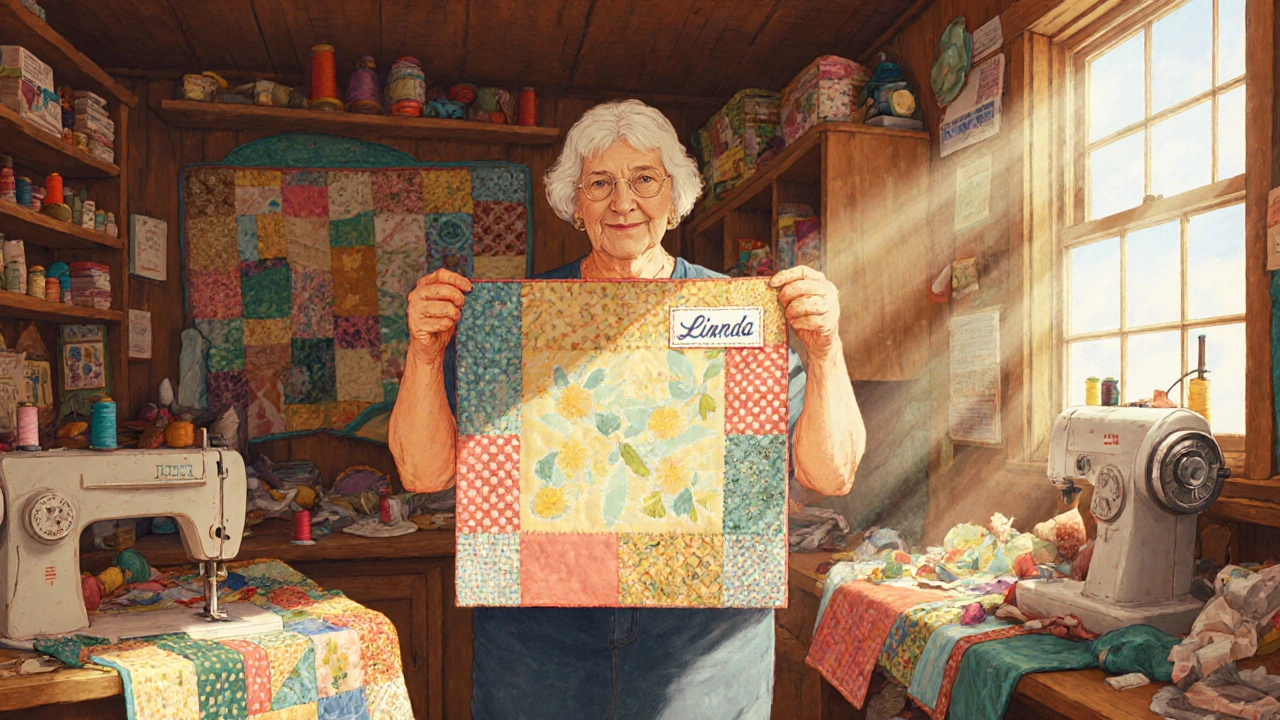When women face barriers to work-whether from injury, illness, mental health challenges, or long breaks for caregiving-vocational therapy isn’t just helpful, it’s life-changing. It’s not about sitting in a room talking. It’s about rebuilding confidence, learning real skills, and finding work that fits your life. And yes, it works. Women across the U.S., Canada, and Europe are returning to the workforce after years away, not because they were pushed, but because they were shown how.
What Vocational Therapy Actually Looks Like
Vocational therapy for women isn’t one-size-fits-all. It’s personalized. A woman recovering from breast cancer might need help with energy management and returning to office work. A single mom escaping domestic violence might need childcare-friendly job training. Someone with PTSD from military service might need structured, low-stress environments to rebuild trust in teamwork.
Therapists start by asking: What did you enjoy doing before? What can you do now? What kind of work would make you feel useful again? Then they build a path. Not a dream. A real, doable plan.
Example 1: Relearning Computer Skills After a Long Break
Meet Maria, 48, from Portland. She left her administrative job in 2012 to care for her aging parents. When they passed, she felt lost. Her skills were outdated. Microsoft Word? She used WordPerfect. Email? She hadn’t opened it in years.
Her vocational therapist connected her with a free 12-week digital literacy program at a local community center. She learned Excel, Google Workspace, Zoom, and how to write professional emails. But more than that-she learned how to ask for help. She practiced mock interviews with other women in the program. Within six months, she landed a part-time remote data entry job with flexible hours. Now she’s training others.
Example 2: Building Confidence Through Craft-Based Work
In rural Ohio, a program called Threads of Renewal helps women recovering from addiction or trauma learn sewing, quilting, and textile design. They don’t just make blankets. They make products they sell online. Each item has a tag with the maker’s name.
One participant, Linda, spent 15 years in and out of shelters. She couldn’t hold a job because she felt ashamed. Her therapist didn’t push her into retail. Instead, they said: You’ve been stitching your life back together for years. Let’s make that visible. Today, Linda runs her own Etsy shop. She earns $2,000 a month. She’s no longer waiting for someone to give her a chance-she’s creating one.
Example 3: Returning to Skilled Trades After Injury
Jamila, 35, was a construction worker in Chicago. A fall on a job site left her with chronic back pain. She couldn’t lift heavy tools anymore. She thought her career was over.
Her vocational rehab team didn’t tell her to give up. They helped her transition into construction project coordination. She learned to read blueprints, use scheduling software, and manage small crews. She trained on a tablet, not a hammer. Within a year, she was hired by a local firm as a site coordinator. She now supervises five men on job sites-and they listen to her.

Example 4: Healing Through Culinary Training
Many women who’ve survived abuse or depression find comfort in cooking. That’s why programs like Second Helpings in Atlanta pair trauma recovery with culinary arts. Women learn knife skills, food safety, menu planning, and customer service-all while working with licensed therapists.
One graduate, Tanya, now runs a small catering business out of her home kitchen. She specializes in meals for people recovering from illness. She doesn’t just feed bodies. She feeds hope. Her clients send her handwritten notes. She keeps them in a shoebox under her bed. That’s her trophy case.
Example 5: Tech Support Roles for Women with Anxiety
Not every job needs to be in an office. Not every job needs to involve crowds. For women with social anxiety or autism, tech support roles are ideal. Vocational therapists help them find remote positions in IT help desks, software testing, or user documentation.
One woman in Vancouver, who struggled to speak in meetings, was trained to write clear troubleshooting guides. She now works for a Canadian tech company, writing step-by-step instructions for their software. She never has to speak on a call. She doesn’t need to attend team meetings. But she’s valued. Her guides are used by 200,000 customers a month.
Example 6: Barbering and Beauty as a Path to Independence
In cities like Detroit and Baltimore, programs train women who’ve been incarcerated or are exiting abusive relationships to become licensed barbers or estheticians. Why? Because beauty services are in demand, flexible, and don’t require a degree.
One woman, Darnell, spent eight years in prison. When she got out, she had no credit, no references, no home. Her vocational therapist enrolled her in a 12-week barbering course at a nonprofit salon. She practiced on volunteers. She learned how to manage money, schedule clients, and build a client base. Two years later, she owns her own shop. Her sign says: “Your hair, your story, your power.”

What Makes These Programs Work?
These aren’t random success stories. They follow a pattern.
- They start where the woman is-not where society thinks she should be.
- They focus on strengths, not deficits. No one says, “You’re broken.” They say, “What are you good at?”
- They offer flexibility-part-time, remote, evening classes, childcare support.
- They include mental health support-therapy isn’t separate from job training. It’s built in.
- They connect to real jobs-not just certificates. Employers are involved from day one.
These programs don’t just give women jobs. They give them back their identity.
Where to Find These Programs
You don’t need to be rich or connected. Most vocational therapy services are free or low-cost through:
- State vocational rehabilitation agencies (funded by the U.S. Department of Education)
- Nonprofits like Goodwill, The Salvation Army, or local women’s shelters
- Community colleges with adult education programs
- Hospital-based rehab centers (especially for cancer survivors or trauma patients)
Search for “vocational rehabilitation services for women” + your city. Or call 211-the free national helpline. They’ll connect you to someone who can help, no judgment, no paperwork at first.
Common Misconceptions
Some people think vocational therapy is for people who “can’t work.” That’s wrong. It’s for people who want to work but need the right support to get there.
Others think it’s only for physical injuries. It’s not. Mental health, trauma, caregiving burnout, and long-term unemployment are all valid reasons to seek help.
And no-you don’t need to be “ready.” You just need to be willing to try one small step.
Final Thought: It’s Not About Fixing You
Vocational therapy doesn’t try to turn you into someone else. It doesn’t erase your past. It doesn’t pretend your pain didn’t happen.
It says: You’ve survived. Now let’s build something that lasts.
For women, that something is often more than a paycheck. It’s dignity. It’s control. It’s the quiet pride of knowing you can stand on your own again-and choose how to stand.
Is vocational therapy only for women who have been injured?
No. Vocational therapy supports women facing many challenges-mental health struggles, long breaks for caregiving, recovery from abuse, incarceration, or simply outdated skills after years away from work. It’s for anyone who wants to return to work but needs help getting there.
How long does vocational therapy usually take?
It varies. Some programs last 6 weeks; others go on for a year. It depends on your goals. Learning basic computer skills might take 3 months. Training to become a licensed barber or project coordinator could take 6 to 12 months. The key is progress, not speed.
Do I need a referral to start vocational therapy?
Not always. Many programs accept self-referrals. You can call your state’s vocational rehabilitation agency or 211 directly. Some programs require a doctor’s note if your condition is medical, but most are open to anyone who says they want to work.
Are these programs free?
Most are free or low-cost. State-funded programs are taxpayer-supported and don’t charge participants. Nonprofits often offer scholarships or cover materials. Some even provide transportation or childcare during training.
Can I do vocational therapy while working part-time?
Yes. Many programs are designed for women balancing jobs, kids, or medical appointments. Classes are often offered evenings, weekends, or online. Therapists work with your schedule-not the other way around.
What if I don’t know what kind of job I want?
That’s normal. Therapists use interest assessments, skills inventories, and short job shadowing experiences to help you explore options. You might try a week of sewing, a day in an office, or a few hours of tech support before deciding. Exploration is part of the process.
If you’re wondering whether vocational therapy is right for you-ask yourself this: Do you want to feel useful again? Do you want to earn your own money? Do you want to look in the mirror and feel proud of what you’re doing? If the answer is yes, then you’re already on the path. The rest is just steps.




